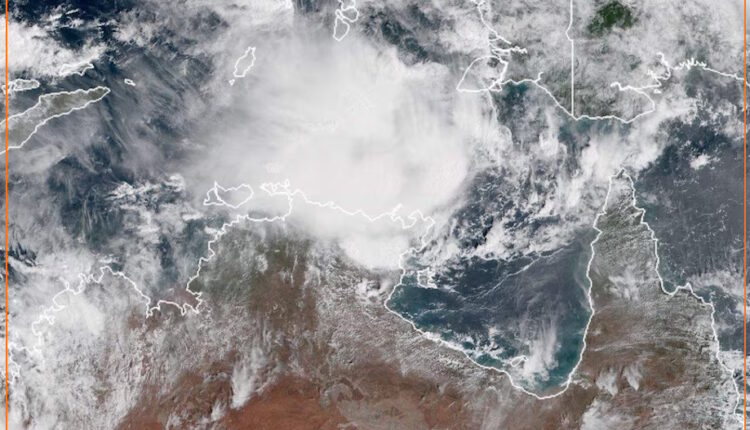DARWIN, AUSTRALIA – A severe tropical cyclone battered Australia’s Northern Territory over the weekend, leaving a trail of damage, widespread power outages, and submerged roads in its wake. While the storm has moved offshore, the massive task of recovery is now underway for residents, including those in the capital city of Darwin.
Tropical Cyclone Fina, which intensified to a Category 3 system, made its presence felt most acutely overnight Saturday into Sunday. The Bureau of Meteorology reported destructive wind gusts of up to 205 kph (127 mph) as the core of the storm passed near Darwin. Although it has since been downgraded as it moves further out to sea, the system continues to generate hazardous conditions along the coast.
For the 140,000 residents of Darwin, the howling winds and torrential rain evoked painful memories of the city’s darkest hour: Cyclone Tracy. That catastrophic storm devastated the city on Christmas Day in 1974, killing 66 people and destroying most of its buildings in what remains one of Australia’s worst natural disasters.
“This cyclone saw a territory that was united and prepared for what was to come,” Northern Territory Chief Minister Lia Finocchiaro stated in a televised media conference from Darwin. She confirmed that the immediate priority was assessing the full extent of the damage.
The initial toll is significant. An estimated 19,000 households—representing tens of thousands of residents—were left without electricity after the storm brought down power lines and damaged infrastructure. Emergency crews have begun the arduous process of damage assessment and repairs, but officials have warned that it could take days to restore power to all affected areas.
Beyond the power outages, the cyclone caused considerable property damage, with reports of fallen trees, damaged roofs, and debris littering streets. Heavy rain from the system also led to flash flooding, submerging numerous roads and cutting off some communities. Authorities have urged residents to stay indoors if possible and to avoid any downed power lines.
The disruption extended to travel, with Darwin International Airport suspending all operations on Saturday as a precaution. Airport management announced Sunday that they are “working to re-establish operations as soon as it is safe to do so,” but significant delays and cancellations are expected as they work to clear debris and check navigational equipment.
A Region Familiar with Fury
The Northern Territory is no stranger to tropical cyclones, but Fina serves as a stark reminder of the region’s vulnerability. According to the Bureau of Meteorology, a Category 3 cyclone—which sits two levels below the most severe Category 5—typically causes significant damage to buildings, crops, and vegetation, and leads to widespread power failures.
The event also echoes recent severe weather on the other side of the country. Just last month, ex-Tropical Cyclone Alfred wreaked havoc in the neighboring state of Queensland, forcing school closures and leaving hundreds of thousands without power.
As the clean-up begins, the community’s spirit of resilience is being tested. While the physical damage from Fina is a long way from the destruction of Tracy, the storm has underscored the ever-present threat of nature’s fury in Australia’s tropical north and the critical importance of preparedness.
Support Dawat Media Center
If there were ever a time to join us, it is now. Every contribution, however big or small, powers our journalism and sustains our future. Support the Dawat Media Center from as little as $/€10 – it only takes a minute. If you can, please consider supporting us with a regular amount each month. Thank you
DNB Bank AC # 0530 2294668
Account for international payments: NO15 0530 2294 668
Vipps: #557320



Comments are closed.